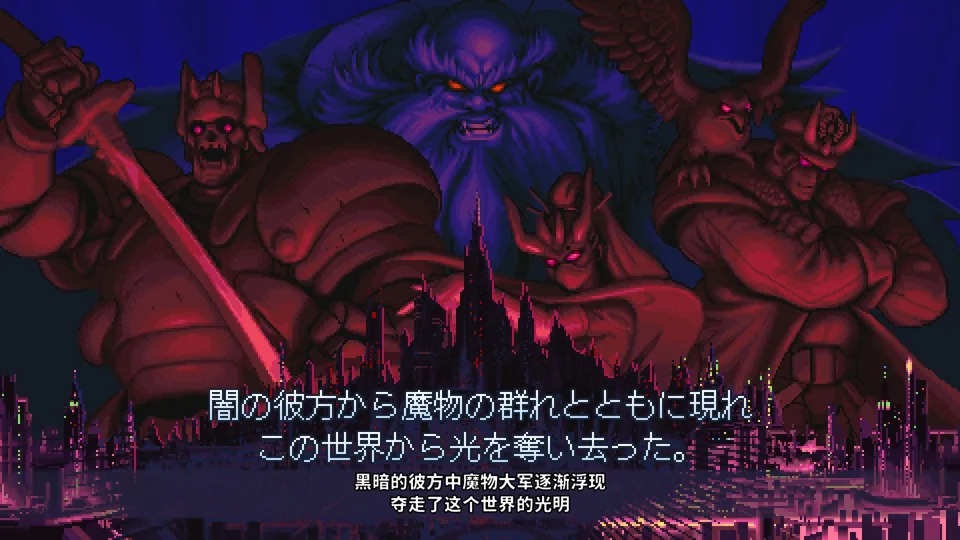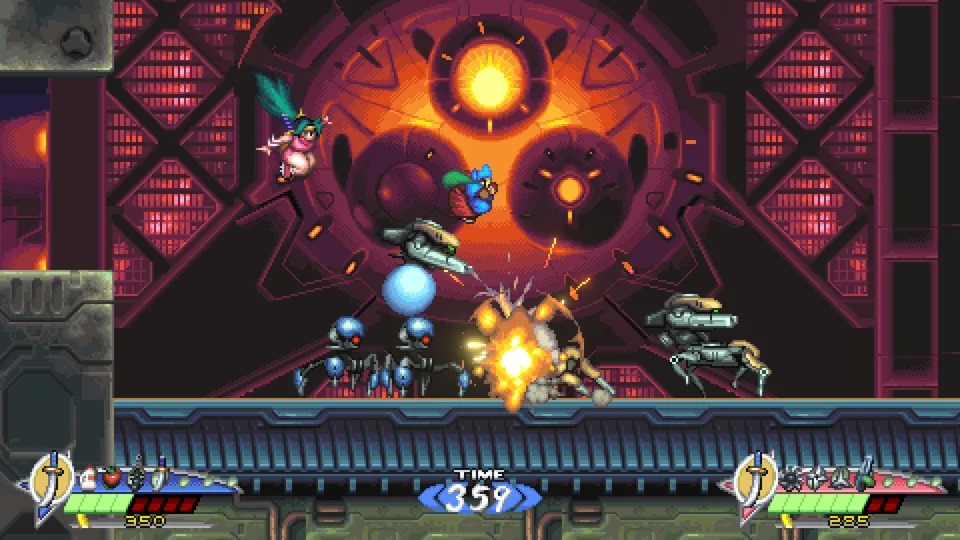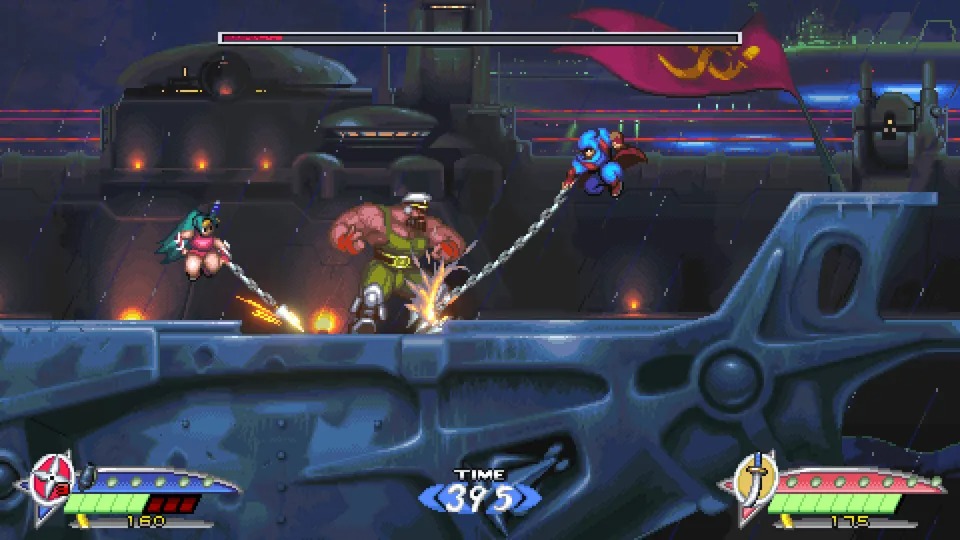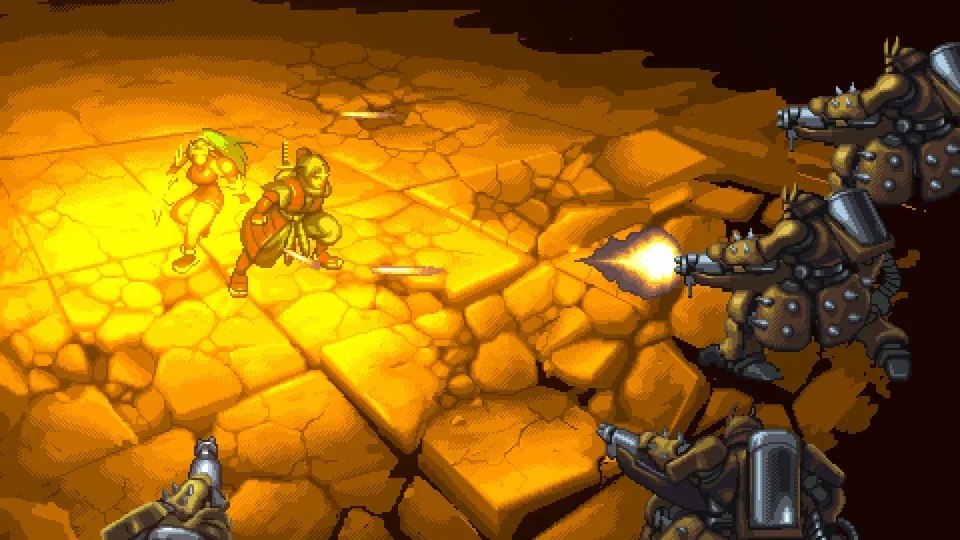KAGE~Shadow of The Ninja Review: A Hardcore 16-bit Remake
For a console player like me who grew up in the 80s, "Shadow of the Ninja" ("KAGE no Shigotonin KAGE") should be a hard-to-miss classic work. Even if you place it in the context of the overall high difficulty environment of the FC platform at that time, the difficulty design of "Shadow of the Ninja" still remains unrivaled. Coupled with excellent control feel and a BGM that lingers in your mind for days, many players experienced a mix of pain and joy, unable to resist diving into the levels again and again, fighting desperately against the minions and bosses.

The two main characters, Hayate and Kaede, have been completely redrawn both in and out of levels.
After nearly 35 years, under the leadership of original core members Yasuyasu Miyabe, Shunichi Taniguchi (art), and Kaoru Mizutani (music), TENGO PROJECT responded to the players' call and carried out a 16-bit remake of "Shadow of the Ninja." The official name is "KAGEShadow of The Ninja," (hereinafter referred to as "KAGEShadow of The Ninja"), and it was officially released on August 29, 2024. This remake retains the core gameplay, level design ideas, and world view structure of the original work, while making significant changes to the art effects, action system, and ninja tool system.
Pleasant high-quality 16-bit pixel art.

One of the project leaders, Yasuyasu Miyabe, mentioned in an interview that the core assumption for the remake of "Shadow of the Ninja" was to reflect what the game would look like if it were made with the highest hardware standards of the time. In the end, although we can see that "KAGE~Shadow of The Ninja" has made significant progress compared to the 8-bit graphics of the original version, it does not feel like a brand-new work that is almost unrelated to "Shadow of the Ninja," but rather like an advanced version of the shadow.
In terms of level structure, the game still adopts a level-based progression, but considering the difficulty level that modern players are accustomed to, the starting position of each small level is designed as a CheckPoint, so you don’t have to worry about starting the entire big level from the beginning after death. The instant save system is also synchronized with these save points, allowing players to leave the game at any time and continue from the starting point of the small level the next time they enter. It’s quite user-friendly.


Retaining the original worldview while adding a decent opening animation.
The original worldview ensures that the number of bosses and levels in the game is not much different from the original (of course, new levels and enemies have been added), and the overall story remains relatively dark and apocalyptic. However, due to the substantial improvement in picture quality, the entire game interface looks more colorful, and with the completely redesigned dynamic images of the male and female protagonists, the atmosphere is obviously much brighter compared to the original.


The distribution of enemies and traps is very dense, which is also one of the sources of the game’s difficulty.
On this basis, as players advance a little in the levels, they will see that the dynamics of the enemies and traps have also become very lively. There are both old faces that have been redrawn based on the original design and a large number of completely new traps and items. Their common feature is richer details in art and small animations, which greatly enhances the vitality of the screen.
In terms of the first impression of entering the game, "KAGE~Shadow of The Ninja" obviously lives up to the expectations of old players. It retains a lot of original content full of nostalgia, while also effectively enhancing the impact and quality of the visuals through technical means. Although it is 16-bit, it does not give people a negative impression of being significantly behind the times in terms of expressiveness. Only by achieving this level of visuals can it possibly evoke the desire for new and old players to challenge the game.
No one designs action games like this anymore.

As mentioned earlier, "Shadow of the Ninja" was originally known for its high difficulty. Although Yasuyasu Miyabe mentioned in an interview that considering the acceptance level of younger audiences, some adjustments would be made to the difficulty of the game, such as including both normal and hard difficulty levels by default and convenient Check Point functions, the current version of the game’s control feel and map design are still too hardcore for the vast majority of ordinary players.
As someone who has always struggled with action games, I didn’t hesitate to choose the normal difficulty to start, but even so, I still felt the difficulty of the game in the first two levels. It was obviously not designed for someone like me, who even struggles to clear the original "Super Mario Bros."


The game modes and difficulty levels are not many, and supporting two-player co-op should be a standard feature of this game.
First of all, the action design of the game is actually very solid. Although the overall art style is cartoonish, you can feel a few frames of startup and recovery in both attack, dodge, and running, which significantly enhances the realistic texture of character movements. On the other hand, this also makes the player’s operation feel "unresponsive" when they are not yet accustomed to this rhythm in the early stages. Simply put, almost any action has to be silently realized in the mind and triggered with this not obvious anticipation.
If it were a 3D action-adventure game with a third-person perspective, a few frames of startup and recovery would not affect the operation much, but this is a fast-paced pure 2D platform-jumping action game. A judgment error of a few tenths of a second can often mean the difference between life and death. Moreover, in the game, both the minions, bosses, and traps basically operate according to fixed patterns, making progress heavily reliant on "memorizing the levels." Many times, taking one step further or getting up one second earlier may result in HP loss, which places high demands on the player’s control precision.

In addition to the inherent ninja sword and chain, the game also provides more than 50 kinds of ninja tools, ranging from giant sticks and machetes to gunpowder guns, cannons, and ground spikes, with a very rich variety. Additionally, in normal difficulty, after death, you can also get rice balls and other recovery items. Each of these ninja tools has a unique attack method and usage scenario, and understanding their respective advantages and disadvantages is very effective for dealing with specific enemies.
For example, although ground spikes cannot move once thrown out, they can continuously damage enemies they touch, making them very effective for dealing with immobile enemies. The shotgun is extremely powerful, but it has obvious recoil that greatly extends the player’s attack recovery time, making it very difficult for players to judge the timing of firing. Using it when surrounded by minions is undoubtedly courting death.

The visual effects of ninja techniques have been greatly improved.

Another difficulty of the game lies in the level design itself. First of all, through comparison, it can be clearly seen that the body proportions of the characters and enemies in "KAGE~Shadow of The Ninja" are significantly larger than in the original, making the level scene space appear relatively small. Therefore, whether it’s the enemies’ attacks or the various trap flying objects, their range of impact has become larger, placing higher demands on the player's positioning.
Moreover, regardless of whether it's normal or hard difficulty, the enemies' desire to attack is equally strong, and this attack range will exceed the visible range of the screen, often resulting in flying objects coming from off-screen, making it almost impossible to defend against.
However, due to the enhanced power of the long-range attack chain, coupled with the relatively generous time limit for each level and the absence of an infinite respawn mechanism for the small enemies, players who don’t plan to rush to the top of the leaderboard can adopt a more conservative strategy. By slowly clearing enemies from a distance with the chain, you can safely progress to the boss room. Although this method may not look great, it at least ensures steady progress and is a special tactic left by the creators for players who struggle with action games.


Many classic minions and bosses from the original game have been retained.
Lastly, it’s worth complaining that although the game offers a rich variety of ninja tools, and you can carry many types at once, switching between ninja tools is quite cumbersome. You must hold down the shoulder button and use the directional pad to slide left and right, similar to the item switching process in "Monster Hunter." This is really too cumbersome for such a fast-paced action game.
Summary:
In terms of theme, popularity, and difficulty, "KAGE~Shadow of The Ninja" is definitely not a mainstream platform action game suitable for most players. Even in normal mode, clearing the game requires a very arduous process of exploration and repeated trial and error. You have to find feasible paths through the heavy encirclement of enemies and traps, and escape with precise operations. You also have to remember the methods to overcome each difficult level and find the almost only way to defeat the bosses as was common decades ago, which really tests the player's patience and control.

However, at the same time, we have to admit that "KAGE~Shadow of The Ninja" vividly reproduces the style of top platform jumping action games under the big environment of that era – high-precision control feel, dense enemies and traps, and boss battles that are almost insurmountable without memorizing the levels. The old-school action game spirit is vividly embodied in this game. If you can adapt to this high-difficulty, high-reward game mode and have a unique nostalgia for the original FC era work, this is definitely a must-play masterpiece.

